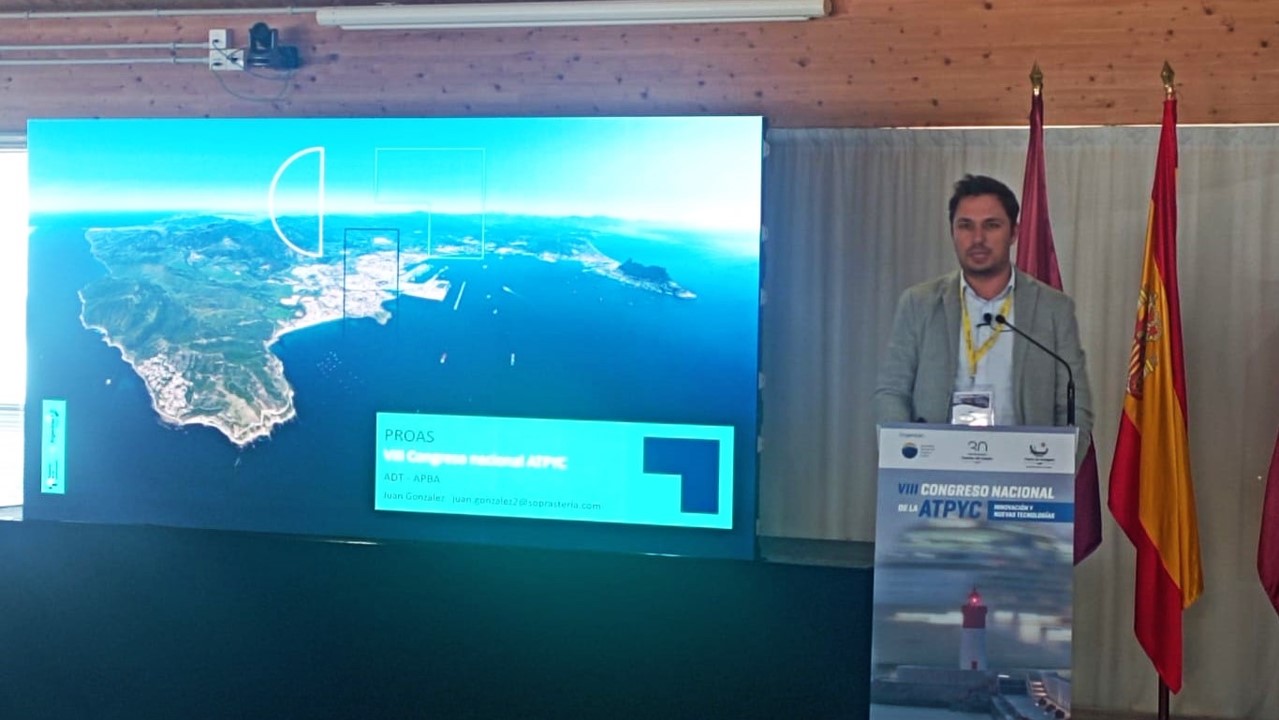The Port Authority of the Algeciras Bay (APBA) participated, last Friday 28th October, in the 8th National Congress of the Technical Association of Ports and Coasts (ATPYC), organised by the Association, Puertos del Estado and the Port of Cartagena.
Under the slogan “Innovation and New Technologies”, more than 200 professionals and experts from the sector, belonging to different port authorities and infrastructure companies, met in Cartagena between 26th and 28th October, with the objective of analysing and configuring the next challenges to be faced by the Spanish ports in order to foster competitiveness, but also to create a much more efficient and environmentally friendly working operation.
To this end, in addition to the participation of the APBA’s Technological Development Area, the event was attended by other Port Authorities and companies such as Moffatt&Nichol, Ferrovial, Siport21, McValnera, Ferrovial, Dragados and Acciona, among others.
The programme was structured in 6 sessions, with a total of 29 presentations of great interest and focused on artificial intelligence, the architecture of environmental platforms, the implementation of BIM methodology, modernisation actions, floating breakwaters, Green Ports, as well as process automation. In addition, there was also the presentation of the Career Achievement Awards for the 2020 – 2022 editions and a technical visit to the Port of Cartagena.

Juan González, member of the APBA’s Advanced Digital Services Centre, spoke about the PROAS (Port Risk Optimized Advanced System) project. A project that the APBA is currently working on and which is focused on the development of an Advanced Predictive System for Ship-Infrastructure Operability. The main objective of this system is to provide a predictive tool for the safety and efficiency levels of port operations based on specific information for each berth (predictions of the physical environment, planning of the scale of vessels and planned operations).
Due to its strong innovative burden, PROAS is divided into two phases. Currently, it is in the last activities of Phase I, developing a MVP or Minimum Viable Product, which will show the movements for a specific vessel based on wind and wave predictions. At the same time, the current Ocean-Meteorological Information System (SAMPA) is being evaluated, which will allow greater precision to be obtained in the forcing variables of the PROAS tool. Then, in Phase 2, the methodology will be extended to the other areas of the port, measurement campaigns will be carried out (of the physical environment and vessel monitoring), and the tool will be developed.
Among the other papers presented at the Congress by ATPYC professionals, the APBA had a prominent presence with the digital twins of Moffat & Nichol, the simulations of port processes of McValnera or the environmental management of blasting in Campamento by the company Tecnoambiente.




Leave a Reply